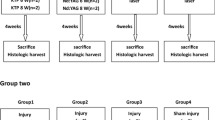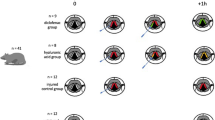Abstract
Low-level laser therapy (LLLT) has been promoted for its beneficial effects on tissue healing and pain relief for skin and oral applications. However, there is no corresponding literature reporting on vocal fold wound healing. Our purpose was to assess the potential wound-healing effects of LLLT on primary human vocal fold epithelial cells (VFECs). In this study, normal vocal fold tissue was obtained from a 58-year-old male patient who was diagnosed with postcricoid carcinoma without involvement of the vocal folds and underwent total laryngectomy. Primary VFECs were then cultured. Cells were irradiated at a wavelength of 635 nm with fluences of 1, 4, 8, 12, 16, and 20 J/cm2 (50 mW/cm2), which correspond to irradiation times of 20, 80, 160, 240, 320, and 400 s, respectively. Cell viability of VFECs in response to varying doses of LLLT was investigated by the Cell Counting Kit-8 (CCK-8) method. The most effective irradiation dose was selected to evaluate the cell migration capacity by using the scratch wound-healing assay. Real-time polymerase chain reaction (RT-PCR) was used to detect the gene expression of TGF-β1, TGF-β3, EGF, IL-6, and IL-10. Irradiation with doses of 8 J/cm2 resulted in 4% increases in cell proliferation differing significantly from the control group (p < 0.05). With subsequent doses at 48 and 72 h after irradiation, the differences between the experimental and the control groups became greater, up to 9.8% (p < 0.001) and 19.5% (p < 0.001), respectively. It also increased cell migration and the expression of some genes, such as EGF, TGF-β1, TGF-β3, and IL-10, involved in the tissue healing process. This study concludes that LLLT at the preset parameters was capable of stimulating the proliferation and migration of human vocal fold epithelial cells in culture as well as increase the expression of some genes involved in tissue healing process. Additionally, successive laser treatments at 24 h intervals have an additive beneficial effect on the healing of injured tissues.




Similar content being viewed by others
References
Friedrich G, Dikkers FG, Arens C, Remacle M, Hess M, Giovanni A, Duflo S, Hantzakos A, Bachy V, Gugatschka M, European Laryngological Society. Phonosurgery Committe (2013) Vocal fold scars: current concepts and future directions. Consensus report of the Phonosurgery Committee of the European Laryngological Society. Eur Arch Otorhinolaryngol 270:2491–2507
Abramoff MM, Lopes NN, Lopes LA, Dib LL, Guilherme A, Caran EM, Barreto AD, Lee ML, Petrilli AS (2008) Low-level laser therapy in the prevention and treatment of chemotherapy-induced oral mucositis in young patients. Photomed Laser Surg 26:393–400
Sugrue ME, Carolan J, Leen EJ, Feeley TM, Moore DJ, Shanik GD (1990) The use of infrared laser therapy in the treatment of venous ulceration. Ann Vasc Surg 4:179–181
Schindl A, Schindl M, Schindl L (1997) Successful treatment of a persistent radiation ulcer by low power laser therapy. J Am Acad Dermatol 37:646–648
Häkkinen L, Uitto VJ, Larjava H (2010) Cell biology of gingival wound healing. Periodontol 24:127–152
Kreisler M, Christoffers AB, Al-Haj H, Willershausen B, d’Hoedt B (2002) Low level 809-nm diode laser-induced in vitro stimulation of the proliferation of human gingival fibroblasts. Lasers Surg Med 30:365–369
Posten W, Wrone DA, Dover JS, Arndt KA, Silapunt S, Alam M (2005) Low-level laser therapy for wound healing: mechanism and efficacy. Dermatol Surg 31:334–340
Leydon C, Imaizumi M, Bartlett RS, Wang SF, Thibeault SL (2014) Epithelial cells are active participants in vocal fold wound healing: an in vivo animal model of injury. PLoS One 9:e115389
Mizuta M, Kurita T, Kimball EE, Rousseau B (2017) Structurally and functionally characterized in vitro model of rabbit vocal fold epithelium. Tissue Cell 49:427–434
Ren C, Mcgrath C, Jin L, Zhang C, Yang Y (2016) Effect of diode low-level lasers on fibroblasts derived from human periodontal tissue: a systematic review of in vitro studies. Lasers Med Sci 31:1–18
Mester E, Mester AF, Mester A (1985) The biomedical effects of laser application. Lasers Surg Med 5:31–39
Marques MM, Pereira AN, Fujihara NA, Nogueira FN, Eduardo CP (2004) Effect of low-power laser irradiation on protein synthesis and ultrastructure of human gingival fibroblasts. Lasers Surg Med 34:260–265
Ayuk SM, Houreld NN, Abrahamse H (2018) Effect of 660 nm visible red light on cell proliferation and viability in diabetic models in vitro under stressed conditions. Lasers Med Sci 33:1085–1093
Alghamdi KM, Kumar A, Moussa NA (2012) Low-level laser therapy: a useful technique for enhancing the proliferation of various cultured cells. Lasers Med Sci 27:237–249
Fekrazad R, Asefi S, Allahdadi M, Kalhori KA (2016) Effect of photobiomodulation on mesenchymal stem cells. Photomed Laser Surg 34:533–542
Hawkins DH, Abrahamse H (2006) The role of laser fluence in cell viability, proliferation, and membrane integrity of wounded human skin fibroblasts following helium-neon laser irradiation. Lasers Surg Med 38:74–83
Wilson SE, Chen L, Mohan RR, Liang Q, Liu J (1999) Expression of HGF, KGF, EGF and receptor messenger RNAs following corneal epithelial wounding. Exp Eye Res 68:377–397
Barrientos S, Stojadinovic O, Golinko MS, Brem H, Tomic-Canic M (2008) Growth factors and cytokines in wound healing. Wound Repair Regen 16:585–601
Puddicombe SM, Polosa R, Richter A, Krishna MT, Howarth PH, Holgate ST, Davies DE (2000) Involvement of the epidermal growth factor receptor in epithelial repair in asthma. FASEB J 14:1362–1374
Boxall C, Holgate ST, Davies DE (2006) The contribution of transforming growth factor-beta and epidermal growth factor signalling to airway remodelling in chronic asthma. Eur Respir J 27:208–229
Znalesniak EB, Hoffmann W (2010) Modulation of cell-cell contacts during intestinal restitution in vitro and effects of epidermal growth factor (EGF). Cell Physiol Biochem 25:533–542
Ferguson MW, O'Kane S (2004) Scar-free healing: from embryonic mechanisms to adult therapeutic intervention. Philos Trans R Soc Lond Ser B Biol Sci 359:839–850
Whitby DJ, Ferguson MW (1991) Immunohistochemical localization of growth factors in fetal wound healing. Dev Biol 147:207–215
Hamblin MR, Demidova TN (2006) Mechanisms of low level light therapy. Proc SPIE 6140:1–12
Toyokawa H, Matsui Y, Uhara J, Tsuchiya H, Teshima S, Nakanishi H, Kwon AH, Azuma Y, Nagaoka T, Ogawa T, Kamiyama Y (2003) Promotive effects of far-infrared ray on full-thickness skin wound healing in rats. Exp Biol Med (Maywood) 228:724–729
Arany PR, Nayak RS, Hallikerimath S, Limaye AM, Kale AD, Kondaiah P (2007) Activation of latent TGF-beta1 by low-power laser in vitro correlates with increased TGF-beta1 levels in laser-enhanced oral wound healing. Wound Repair Regen 15:866–874
Chang Z, Kishimoto Y, Hasan A, Welham NV (2014) TGF-β3 modulates the inflammatory environment and reduces scar formation following vocal fold mucosal injury in rats. Dis Model Mech 7:83–91
Lin TW, Cardenas L, Glaser DL, Soslowsky LJ (2006) Tendon healing in interleukin-4 and interleukin-6 knockout mice. J Biomech 39:61–69
Skutek M, van Griensven M, Zeichen J, Brauer N, Bosch U (2001) Cyclic mechanical stretching enhances secretion of interleukin 6 in human tendon fibroblasts. Knee Surg Sports Traumatol Arthrosc 9:322–326
Ricchetti ET, Reddy SC, Ansorge HL, Zgonis MH, Van Kleunen JP, Liechty KW, Soslowsky LJ, Beredjiklian PK (2008) Effect of interleukin-10 overexpression on the properties of healing tendon in a murine patellar tendon model. J Hand Surg Am 33:1843–1852
Alam R, Kumar D, Anderson-Walters D, Forsythe PA (1994) Macrophage inflammatory protein-1 alpha and monocyte chemoattractant peptide-1 elicit immediate and late cutaneous reactions and activate murine mast cells in vivo. J Immunol 152:1298–1303
Lee SY, Park KH, Choi JW, Kwon JK, Lee DR, Shin MS, Lee JS, You CE, Park MY (2007) A prospective, randomized, placebo-controlled, double-blinded, and split-face clinical study on LED phototherapy for skin rejuvenation: clinical, profilometric, histologic, ultrastructural, and biochemical evaluations and comparison of three different trea. J Photochem Photobiol B 88:51–67
Torres-Silva R, Lopes-Martins RA, Bjordal JM, Frigo L, Rahouadj R, Arnold G, Leal-Junior EC, Magdalou J, Pallotta R, Marcos RL (2015) The low level laser therapy (LLLT) operating in 660 nm reduce gene expression of inflammatory mediators in the experimental model of collagenase-induced rat tendinitis. Lasers Med Sci 30:1985–1990
Schindl A, Schindl M, Pernerstorfer-Schon H, Schindl L (2000) Low-intensity laser therapy: a review. J Investig Med 48:312–326
Schindl A, Schindl M, Schon H, Knobler R, Havelec L, Schindl L (1998) Low-intensity laser irradiation improves skin circulation in patients with diabetic microangiopathy. Diabetes Care 21:580–584
Karu TI, Pyatibrat LV, Kalendo GS (2004) Photobiological modulation of cell attachment via cytochrome c oxidase. Photochem Photobiol Sci 3:211–216
Avci P, Gupta A, Sadasivam M, Vecchio D, Pam Z, Pam N, Hamblin MR (2013) Low-level laser (light) therapy (LLLT) in skin: stimulating, healing, restoring. Semin Cutan Med Surg 32:41–52
Role of funding source
The work is supported by the National Natural Science Foundation of China (number: 81329001).
Author information
Authors and Affiliations
Corresponding author
Ethics declarations
Conflict of interest
The authors declare that they have no conflict of interest.
Ethical approval
Ethical approval was obtained from the ethics committee of the Eye, Ear, Nose, and Throat Hospital of Fudan University (2017061).
Informed consent
Informed consent was obtained from all individual participants included in the study.
Rights and permissions
About this article
Cite this article
Lou, Z., Zhang, C., Gong, T. et al. Wound-healing effects of 635-nm low-level laser therapy on primary human vocal fold epithelial cells: an in vitro study. Lasers Med Sci 34, 547–554 (2019). https://doi.org/10.1007/s10103-018-2628-0
Received:
Accepted:
Published:
Issue Date:
DOI: https://doi.org/10.1007/s10103-018-2628-0




